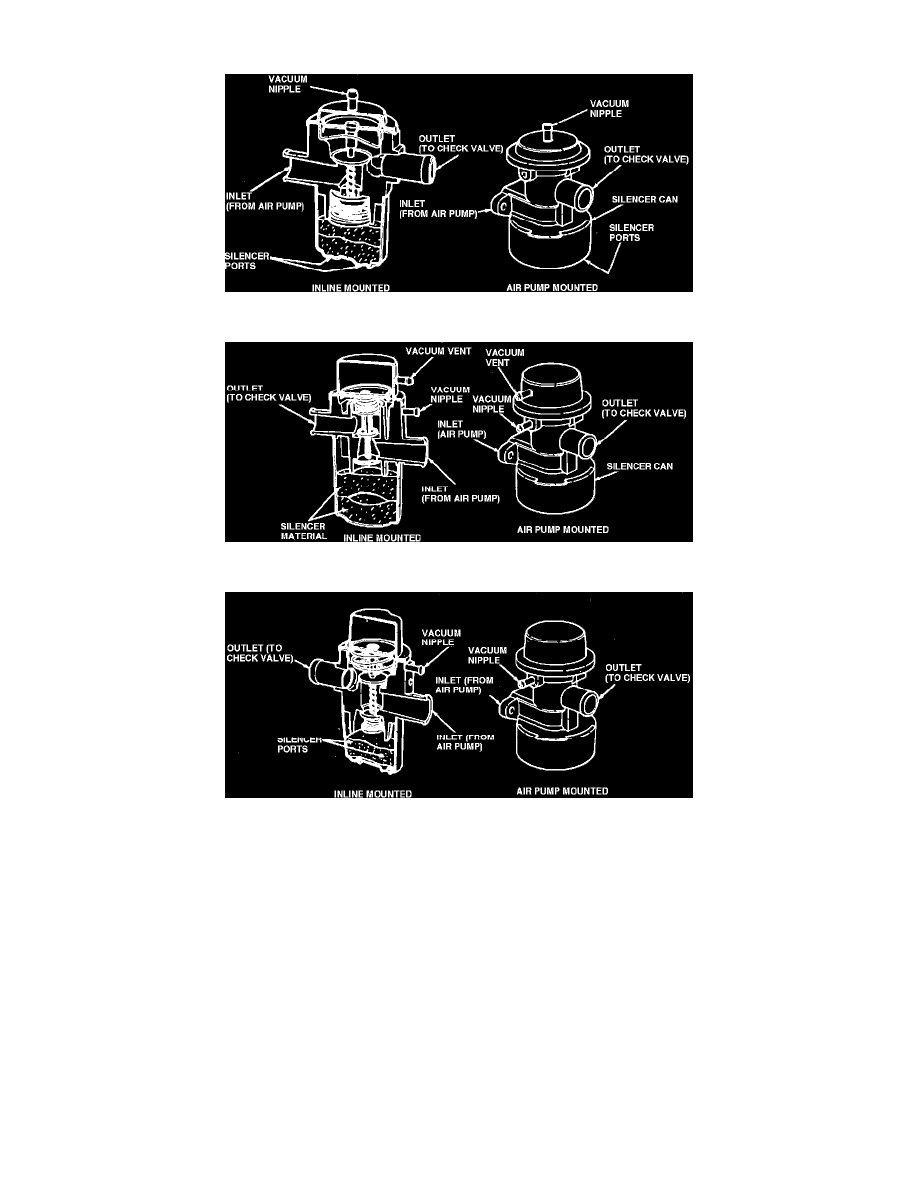Mustang L4-140 2.3L SOHC (1982)

Air Injection Bypass Valve: Description and Operation
Normally closed timed air bypass valve
Normally open timed air bypass valve with vacuum vent
Normally open timed air bypass valve less vacuum vent
The air bypass system services the same purpose as earlier types, but three different types of bypass valve are used, depending on application. These
are: normally closed bypass valve, normally open bypass valve with vacuum vent and normally open bypass valve without vacuum vent. They are
mounted "inline", or on the air pump, Figs. 61, 62 and 63.
The normally closed timed bypass valve, Fig. 61, is used on vehicles with catalytic converter. During normal operation, engine manifold vacuum
applied through the vacuum differential valve (VDV) holds the valve upward, allowing thermactor air to flow to the exhaust manifolds and blocking the
vent port. When intake manifold vacuum rises or drops sharply, the VDV operates and momentarily cuts off the vacuum to the bypass valve. The spring
pulls the stem down, seating the valve to cut off pump air to the exhaust manifolds and dumping the dump valve to momentarily divert the air to
atmosphere. If air pump pressure becomes excessive or there is a restriction in the system, the excess pressure will unseat the valve in the lower portion
of the bypass valve and allow a partial flow of pump air to the atmosphere, while at the same time, the valve in the upper part of the bypass is still
unseated allowing a partial flow of pump air to the exhaust manifold to meet system requirements.
The normally open timed bypass valve with vacuum vents, Fig. 62, provides a timed air dump during deceleration and when differences in vacuum
pressure between the signal port and vent port occur. The signal port must have 3 inches Hg more vacuum than the vent port to prevent the valve from
dumping. The valve is used to protect catalyst overheating.
The normally open timed bypass valve without vacuum vents supplies air to the exhaust system with a higher than normal vacuum signal during cold
start, short idles and acceleration. When low or no vacuum is applied, pump air is dumped though the silencer ports of the valve, Fig. 63.
